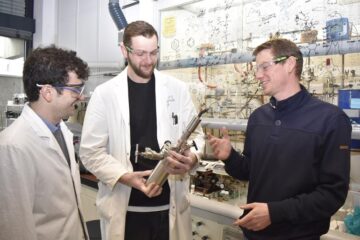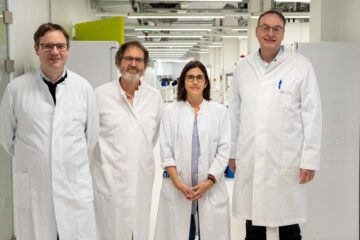New analytical methods for the study of abiotic contaminants in foodstuffs

Professor Ramón Barrio´s research team at the Department of Analytical Chemistry of the University of the Basque Country (UPV/EHU) has developed a series of new analytical methodologies in order to tackle the the problem of the persistence of certain commonly used pesticicides in ecosystems such as forests and agricultural land.
The characterisation of pesticicide residues in various matrixes and in kinetic studies on degradation as a function of meteorological parameters provided us with knowledge about the persistence and mobility of the chosen compounds. Also, optimised dosages and application systems were proposed in order to avoid unnecesary environmental risks and minimise their subsequent appearance in products aimed for human consumption.
The characterisation of these compounds involved working with chromatographic techniques (LC-MS, GC-MS) and voltampermetric ones (microsensors based on molecular imprint polymers), at times using the equipment of the Central Analysis Service of the UPV/EHU (www.ehu.es/inves/central_analisis.htm).
One of the sectors of production with which the research team worked most was the wine producing sector. A number of agreements have been signed with public bodies such as the Basque Government Department of Agriculture and Fisheries, Technology Centres and with a number of bodegas (wineries) from the Rioja Alavesa, in order to investiagate aspects regarding dosage for the prevention of plant diseases.
Also, the presence of minority organic compounds of an endogenic origin, generated either by the plant itself or in the processes of transformation, affects areas of food safety. Within the framework of the aforementioned agreements, studies relating to the quality of grape earmarked for wine production were carried out (involving parameters such as glucose, fructose, polyphenols index, pH, Brix grade and malic, tartaric and gluconic acids). Also studied was the detection and control of the genesis of biogenic amines in the processes of wine making (compounds associated with the intolerance to wine by persons that have a diamino-oxidase enzyme defect, which produces an excess in the absorption of these amines and, in turn, produces severe migraine-type headaches).
Media Contact
More Information:
http://www.basqueresearch.comAll latest news from the category: Agricultural and Forestry Science
Newest articles

Efficient, sustainable and cost-effective hybrid energy storage system for modern power grids
EU project HyFlow: Over three years of research, the consortium of the EU project HyFlow has successfully developed a highly efficient, sustainable, and cost-effective hybrid energy storage system (HESS) that…

Safer alternative for an explosive reaction
The chemical industry has been using a reaction with explosive chemicals for over 100 years – now Mülheim scientists have discovered a safer alternative. The Ritter Group of the Max…

How immune cells communicate to fight viruses
Chemokines are signalling proteins that orchestrate the interaction of immune cells against pathogens and tumours. To understand this complex network, various techniques have been developed to identify chemokine-producing cells. However,…





















